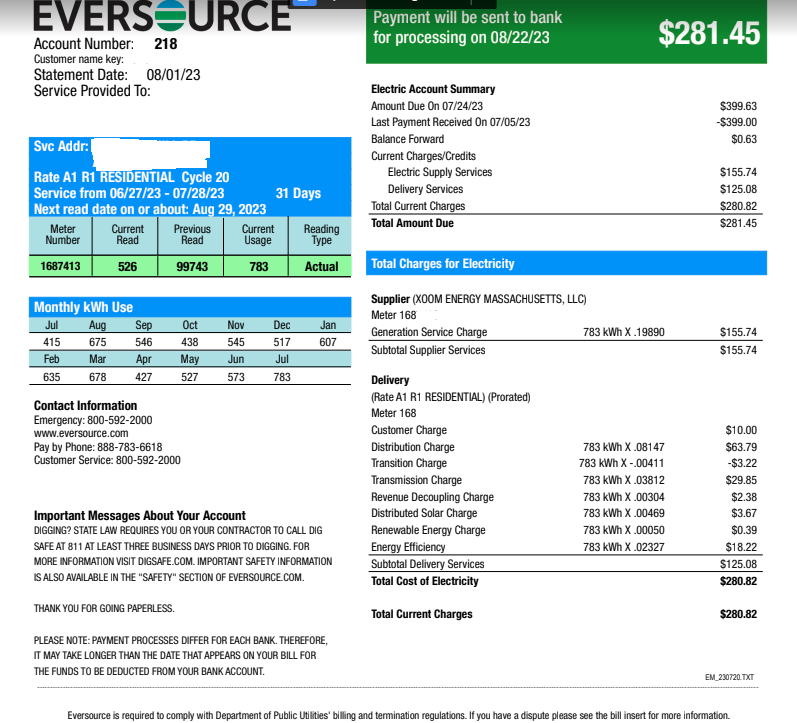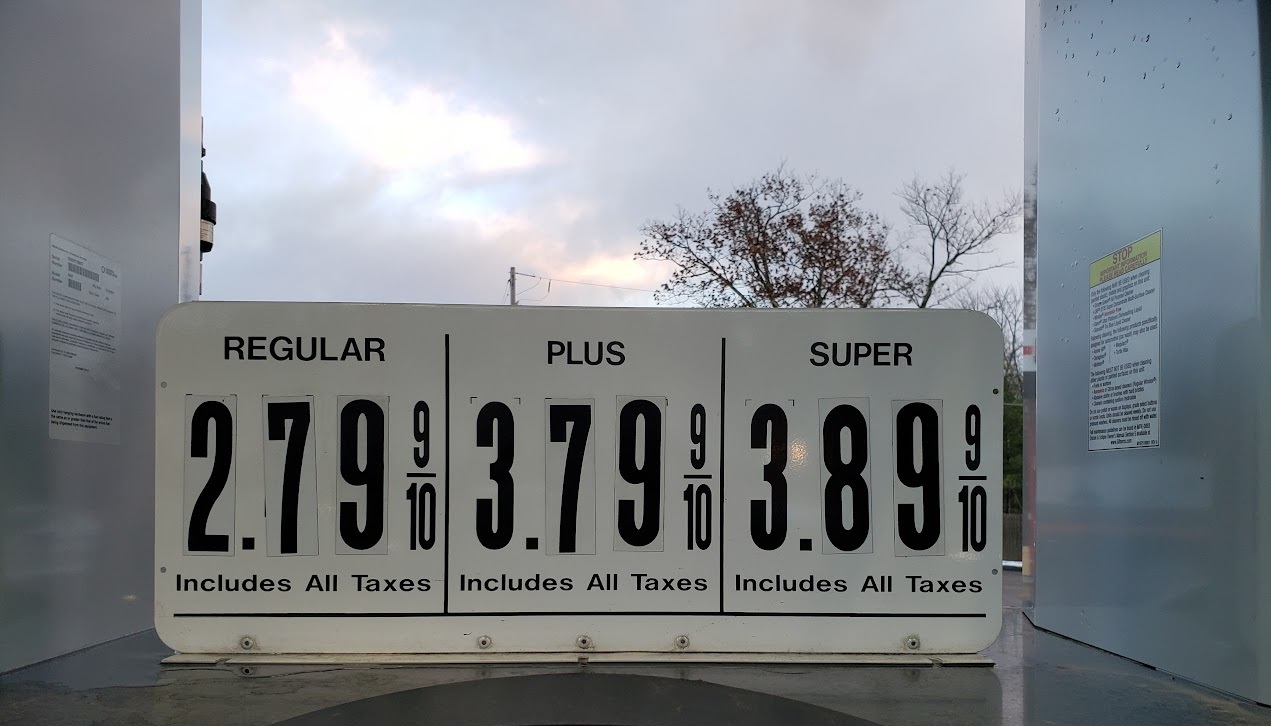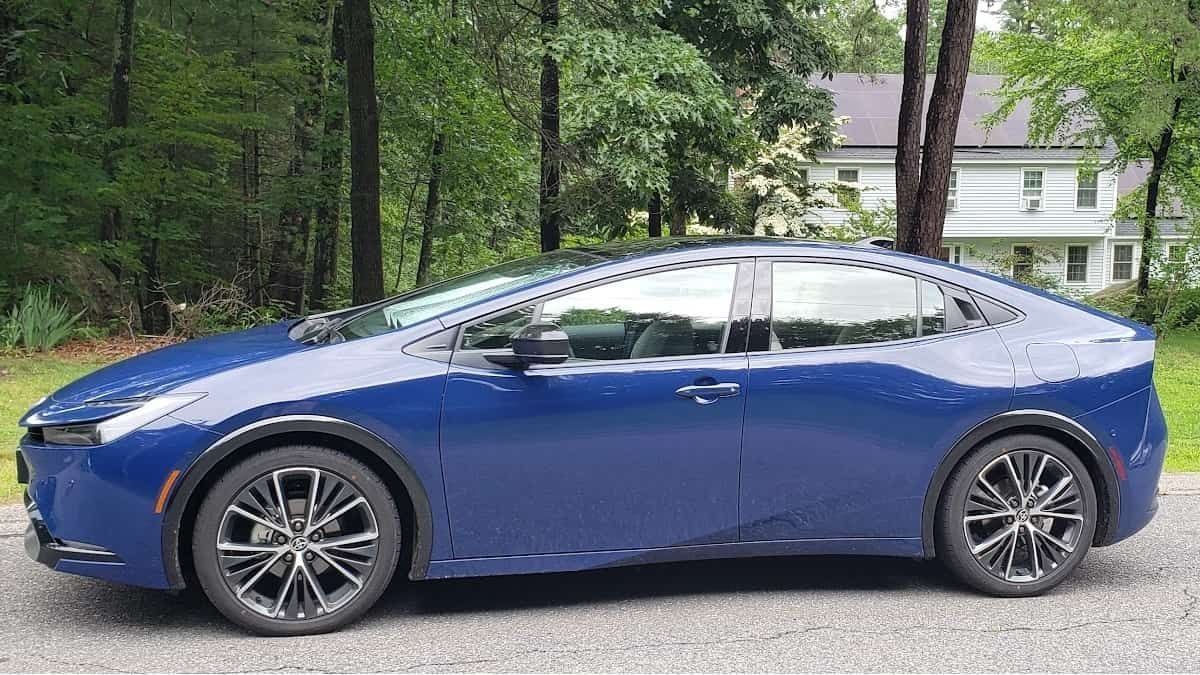If you are shopping for a green vehicle, one flim flam to watch out for is “price after gas savings.” This is an imaginary price reduction intended to fool the buyer into thinking that purchasing a battery-electric vehicle comes with savings over other vehicle types, such as a conventionally-powered car, hybrid, or plug-in hybrid. Since it is imaginary, it is hard for us to know precisely how the flim flammers come up with their imaginary savings number.
Related Story: Public EV Charger Price Increases Mean It's Now Cheaper To Power a Gas Car
The way this misleading price scheme works is the manufacturer creates a build page and then offers to configure and price out the battery-electric vehicle to your tastes. The configurator then shows the cost of the vehicle at a shockingly low number. This is accompanied by a “gas savings,” “fuel savings,” or “expected potential savings” deduction, making the cost seem artificially low.
In some area someplace, where liquid fuel prices are unusually high and electricity prices unusually low, that artificial number may make sense to a buyer. However, in markets like Metro Boston and with suppliers like Eversource, it costs less to power a hybrid car than a battery-electric vehicle. So, rather than “gas savings,” there is actually an electricity penalty.

In order to highlight this, we figured we would approximate the cost per mile to power a popular affordable battery-electric vehicle and compare that to the cost per mile for liquid fuel* of a Prius. Next, we will simply multiply by 15,000 miles per year and then multiply by 20 years, the typical lifespan of a Prius. That will give us a comparison of the energy costs, and we will then know our “electricity savings.”
Related Story: Electric Vehicles' Tire Cost Will Negate Maintenance Savings vs. ICE
 Cost of Liquid Fuel* For A Prius
Cost of Liquid Fuel* For A Prius
North and West of Boston, the cost of gas right now is around $3.00 per gallon. Where I get my fuel, just over the New Hampshire border, the price for regular unleaded this week was $2.80 per gallon. We’ll use the higher cost just to keep this a fair fight for the unfortunate BEVs.
With its 57 MPG rating and a price for fuel of $3.00, the Prius has a cost per mile of 5.3 cents per mile driven. In our testing of the Prius, it exceeded its EPA estimate, but let’s use the more conservative MPG rating, just to keep this a fair fight for the unfortunate BEVs.
Cost Per Mile For BEVs - Chevy Bolt EUV as Our Example
The Chevrolet Bolt and Bolt EUV have just been discontinued by General Motors due to huge popularity. There is presently no replacement being sold. However, GM says that it plans to bring back the Bolt EUV in 2025. So, let’s use this vehicle as our example. It was the single-highest-selling affordable BEV over the past few years, and it is still on sale right now as the remaining inventory is consumed. Also, we love the Bolt EUV based on our testing. Just to be clear, we are not trying to imply that GM uses this industry gimmick in its advertising. In fact, we think GM does a fantastic job at keeping its prices clear and honestly represented.
The Bolt EUV has a 65kWh battery capacity. It has a range of 247 miles with that battery capacity, so we only need to calculate the cost to fill the battery, and then we know the cost per mile using the total range. Public chargers are presently costing roughly $.50/kWh right now in our area. At home, we have been paying about $0.34/kWh. Let’s use the lower-cost electricity just to keep things fair for the BEV. The cost to fill the battery is $22.10. That money carries a person 247 miles. Therefore, the cost per mile is $0.0894736/mile. Let’s call it 9 cents per mile, since that is what it rounds to.
20-Year Electricity Savings Calculation
Now that we know the cost to power a Prius and the cost to power a Bolt EUV, we can calculate our electricity savings over the life of the Prius. The EPA calls 15,000 miles the average for Americans driving today. 15K miles per year for 20 years is 300,000 Miles. That sure sounds like a lot of miles for a Bolt EUV. However, we have highlighted many Prius owners’ cars that have driven past 300K miles. So, let’s complete our math.
The 300K mile cost of energy for the Bolt UEV is $27,000
The 300K mile cost of energy for the Prius is $15,900
Therefore, the electricity cost savings for the Prius would be $11,100.
Future Gas and Electricity Prices
Regular unleaded liquid fuel* has been very stable over time when adjusted for inflation, and electricity costs increase rapidly when adjusted for inflation here in Mass. With EVs adding market share and liquid-fuel-powered cas becoming more efficient over time, we will use less and less liquid fuels, so one would expect that with lowered demand, the price will decline. Conversely, by adding to our country's total electric draw, one would expect electricity costs to increase. Let’s ignore that and just let the numbers stand as they are. After all, that is what the BEV advertisers are doing.
So, the upshot of the math is that the Prius enjoys a massive $11,100 cost per mile of energy savings since it costs more to power a battery-electric vehicle than it does a vehicle powered only by liquid fuels*. If you are shopping for a new green vehicle, be sure that you know the cost of energy for the various types of vehicles in your area. National averages are meaningless when it comes to cost per mile for energy since you can only source your energy locally.
Post Scripts:
What Does Liquid Fuel Mean?
We use the term “liquid fuel” because you cannot buy 100% gasoline at fuel stations in our area. 10% of the liquid fuel sold is ethanol (made from corn), so the fuel is actually a 90-10 blend of gas and a non-gas liquid fuel. The ethanol acts to increase power, reduce pollution emissions, and also reduce the carbon footprint since it is not a “fossil fuel.” Finally, using 10% liquid fuel that is grown makes the fuel more sustainable. It is inaccurate to say that we “use gas” in our area since it is not all gas.
Hey, What About Solar?
Solar power is great where the sun shines most of the time and where shoppers value installed solar. We had a quote to add solar power to our home in 2023. It was $65,000 after rebates and incentives. We spoke to three area realtors who told us the solar would have no added value if we sold the home. Therefore, adding solar would have resulted in a net loss for us since we won’t stay in the home long enough to break even on the installed array cost.
**Prius Cost
The 2024 Toyota Prius LE has a starting price, including its Delivery, Processing, and Handling Fee of $29,045.
John Goreham is an experienced New England Motor Press Association member and expert vehicle tester. John completed an engineering program with a focus on electric vehicles, followed by two decades of work in high-tech, biopharma, and the automotive supply chain before becoming a news contributor. In addition to his eleven years of work at Torque News, John has published thousands of articles and reviews at American news outlets. He is known for offering unfiltered opinions on vehicle topics. You can follow John on Twitter, and connect with him at Linkedin.
Images by John Goreham





